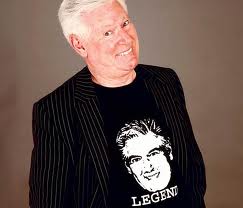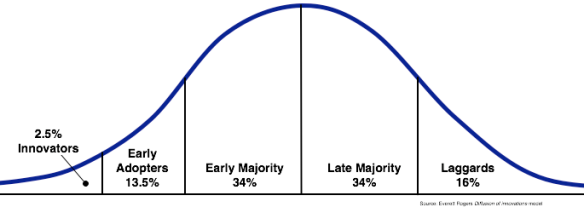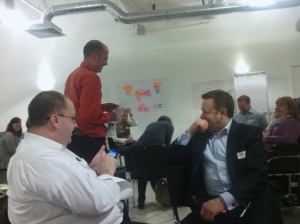 I always remember Saturday evenings as being magical. It was family time, we’d play games and then be treated to some Saturday night telly. For those that can remember we’re talking TV gold; Beadles About, You’ve Been Framed (with Jeremy Beadle), Family Fortunes (with Les Dennis), Gladiators (with John Fashanu & Ulrika Johnson) and my all time favourite programme Catch Phrase with the legend that is Robert ‘Roy’ Walker (pictured).
I always remember Saturday evenings as being magical. It was family time, we’d play games and then be treated to some Saturday night telly. For those that can remember we’re talking TV gold; Beadles About, You’ve Been Framed (with Jeremy Beadle), Family Fortunes (with Les Dennis), Gladiators (with John Fashanu & Ulrika Johnson) and my all time favourite programme Catch Phrase with the legend that is Robert ‘Roy’ Walker (pictured).
Roy, together with his partner in crime Mr Chips, presented in my mind what was one of the greatest TV shows of all time. The premise was simple, contestants had to guess the famous catchphrase from short clips of pictures as quickly possible. Meanwhile Roy would actively encourage them with his very own catch phrase “Say what you see”.
It’s this catch phrase that takes the focus back to my recent blogging exploits. I’ve really enjoyed discussing the themes from my first three blogs and it’s the comments that have provided the ideas for each subsequent post.
This one is no different and the series (if you can call them a series) fit in with where I am right now in a lot of ways. This wasn’t planned although you could argue that it fits together a little bit too well. It can be one for the conspiracy theorists to analyse in a week or two.
Here’s a brief summary of the three posts;
Summary of the World Café session at LnD Connect Unconference
There is so much in here but the discussions centred around 3 key questions
1) What L&D should STOP doing?
2) What excites you right now in L&D?
3) What does the future hold?
It was the comments from @Burrough & @PerryTimms that gave the idea for the next post as they mentioned “a better future” and “personal leadership” but there were also doubts raised that this small group of people could change a profession.
Assumed Constraints & L&D Thinking
After attending the Unconference, I felt and still do feel like I can make a change; I know everyone who attended feels the same. The doubts raised around the ability to make a change reminded me of a book I read Self-Leadership and the One Minute Manager. In the book assumed constraints and elephant thinking are introduced as part of the story and I believe, L&D professionals can suffer from assumed constraints “I can’t do that as it’s not been done before”. The link to elephant thinking reflected that if enough people break away from the post and traditional L&D thinking then the profession will change and the post itself will be removed forever. It was the comments by David Goddin (@ChangeContinuum) that introduced the Diffusion of Innovation that prompted the next post.
You are NOT an innovator
So if we want to create a better future and make lasting change this needs personal leadership, an ability to be original or innovative and then action to get there right? I used a conversation I had via Twitter to get the conversation going on whether L&D are in fact being innovative or just regurgitators of other peoples’ ideas. Great comments followed and in summary WHATEVER you call this change, the consensus was that L&D / HR professionals are the ones that need to make it happen, support the early adopters and follow it through past the tipping point and in to main stream adoption.
So where does this leave us?
Well I don’t know about you but it leaves me in the same place as before and after the Unconference, I still want to make a change and do things differently. It might not be innovation in the opinion of Harvey Briggs in his post The Innovation Obsession (thanks to @CraigTaylor74 for the link) but I don’t care about that as there is one important element in the post that links all this together and one that we all need to share. In his post Harvey states
“Vision is the ability to see the world as it could be and create a path to that future”.
I couldn’t agree more with this statement in relation to workplace learning right now, in fact it’s more than workplace learning it’s the actual future of the workplace itself. There are those who can see this change and are talking about it and sharing their ideas on it and there are those actually doing it. I really like the work that @RyanTracey is doing at the moment highlighted in his post How to revamp your learning model and I know he’s not alone. It’s not a pipe dream, it’s possible but it’s not easy and I’ve attended numerous conferences and listened to speakers who talk about it like it is easy to do. The only bubble I’m willing to burst is the “think it’s easy” bubble.
We need people in L&D with the vision to see the world of workplace learning differently and we need to help our colleagues and the people in the places that we work see this too and take them on the journey with us.
In terms of an organisational vision this is usually brought to life by some sort of vision statement which supports the organisations’ strategic objectives. L&D must support the organisational objectives of course but HOW we do that now and in the future is up to us. What’s your vision around learning, do you even have one?
That is the question you need to ask yourself right now, have you or the people who make the decisions in and around L&D / HR got the vision to see how the world could be and support their organisation achieve and exceed its objectives in the next 1,2 or 3 years and beyond?
If it’s not you, go and have a conversation with those in your organisation who are responsible for the vision and strategy for learning and development, HR or technology. Ask them a simple question on the future of the workplace , ask them;
What do you see?
It’s a simple question to ask but one that could prompt a very powerful reply and discussion and one that should give you an insight in to what you are going to do differently in the next 12 months.
If the answer does not match with your hopes and expectations then you need to ask yourself;
How can YOU influence this vision?
How can YOU help create that better future?
You can’t do this by staying silent, you cannot do this by attending conferences or unconferences or any external events with as @Burrough says ‘enlightened minds’. We need to take action and do things differently and demonstrate the value in our own organisations with our own colleagues. We need to be making these changes ourselves and role modelling at every opportunity. It might be the #PunkHR approach outlined by @PerryTimms in his post The emergence of Punk HR or it might be a Revamp of the Learning Model, the point is it’s something OTHER than silence and the thinking that someone else will do it.
Harvey Briggs was right about one thing, vision is the start of change. Well this is what we need in the HR and L&D profession, people with vision and the ability to see things differently and in order to create a vision we must look to Roy for inspiration.
We must say what we see and help others see the world as it could be.
It’s the only way we’ll change our profession











